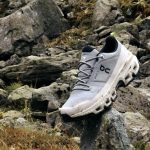Slow but steady will be a predominant theme for the U.S. footwear industry over the next two years, mainly due to pent-up demand and higher average selling prices. Footwear revenues hit a high point in 2021, growing by 23 percent, versus 2020, as unit sales also increased by double-digits; however, both revenue and unit sales are projected to level out through 2024, according to The NPD Group.
NPD’s Future of Footwear report, based on retail tracking data it compiled, forecasts that prices will continue to increase through 2024 but at a modest rate as promotional activity resumes and offsets pricing increases. The company said industry revenue and unit sales are on track for a single-digit increase through 2024, although units will remain under pre-pandemic 2019 levels.
“The number and depth of promotions have declined since the pandemic began,” said Matt Powell, a sports industry advisor for NPD. “Supply issues led to lean inventories, which allowed brands to promote less and sell more shoes at full price. Supply chain issues will ease starting this year, but the industry runs a real risk of overshooting demand, which will cause more promotion and lost margin if improperly managed.”
In terms of recovery, the fashion footwear category is lagging behind the sport-leisure, performance and outdoor footwear categories; however, as consumer lifestyles shift to include more social activities, certain styles will help the fashion category exceed 2019 revenue by the end of 2022.
“Although unit sales will lag, we expect the fashion category will exceed its 2019 revenue mark aided by rising prices,” said Beth Goldstein, fashion footwear and accessories analyst, NPD. “The standout silhouettes will be those that align with consumer demand for casual comfort, as they return to pre-pandemic events and activities, while at the same time holding onto some pandemic-related behaviors.”
Comfort elements are the most important feature U.S. consumers look for when purchasing footwear.
Illustrating the importance of causal and comfortable footwear in consumers’ closets, the NPD study found that a potential 15 percent price increase would affect sneakers and causal shoes less negatively than others, with one-third of consumers delaying buying higher-priced dress and outdoor shoes, winter boots and slippers. However, the majority it said would purchase as planned for athletic and casual footwear.
Photo courtesy Harper’s Bazaar/Getty















